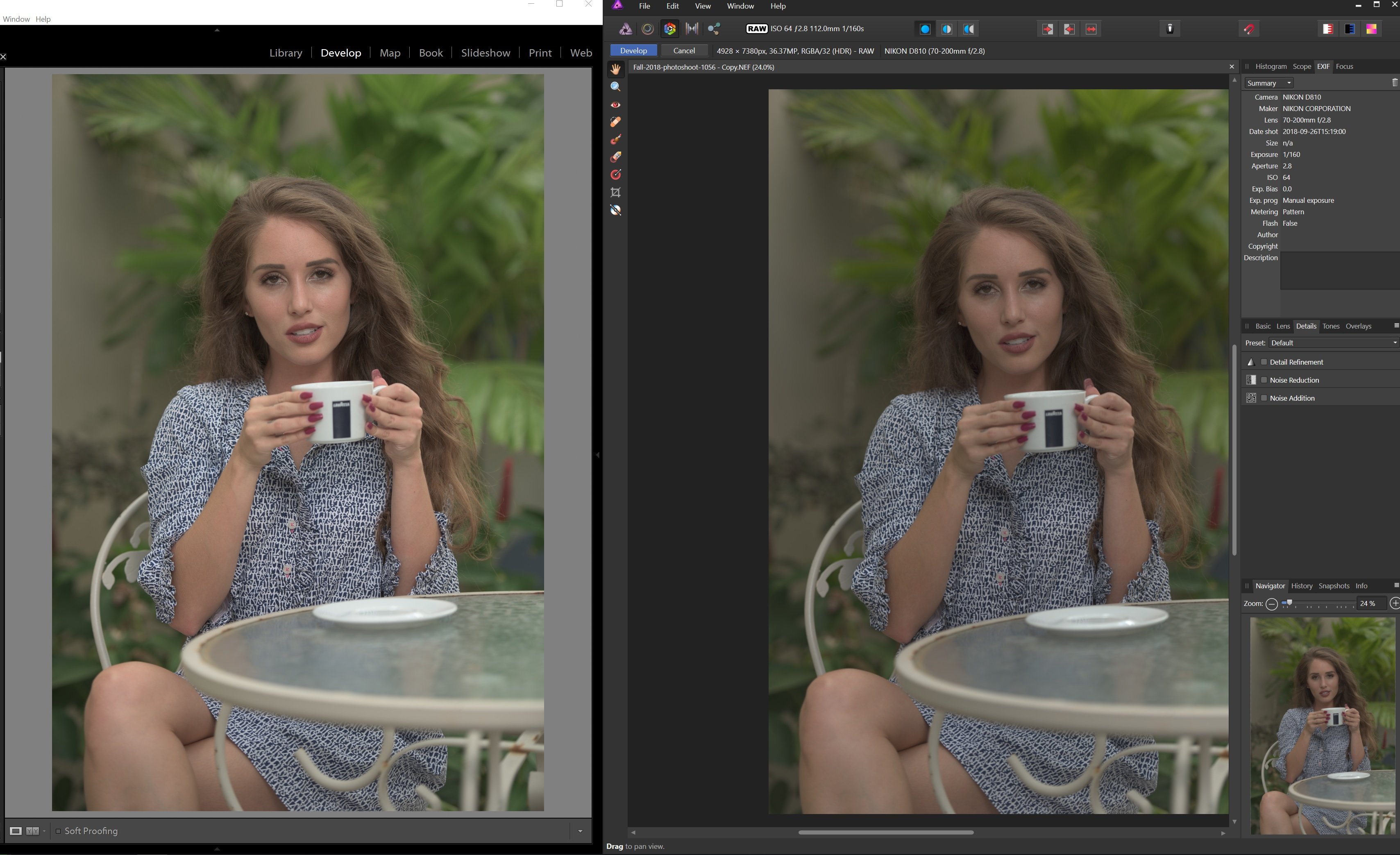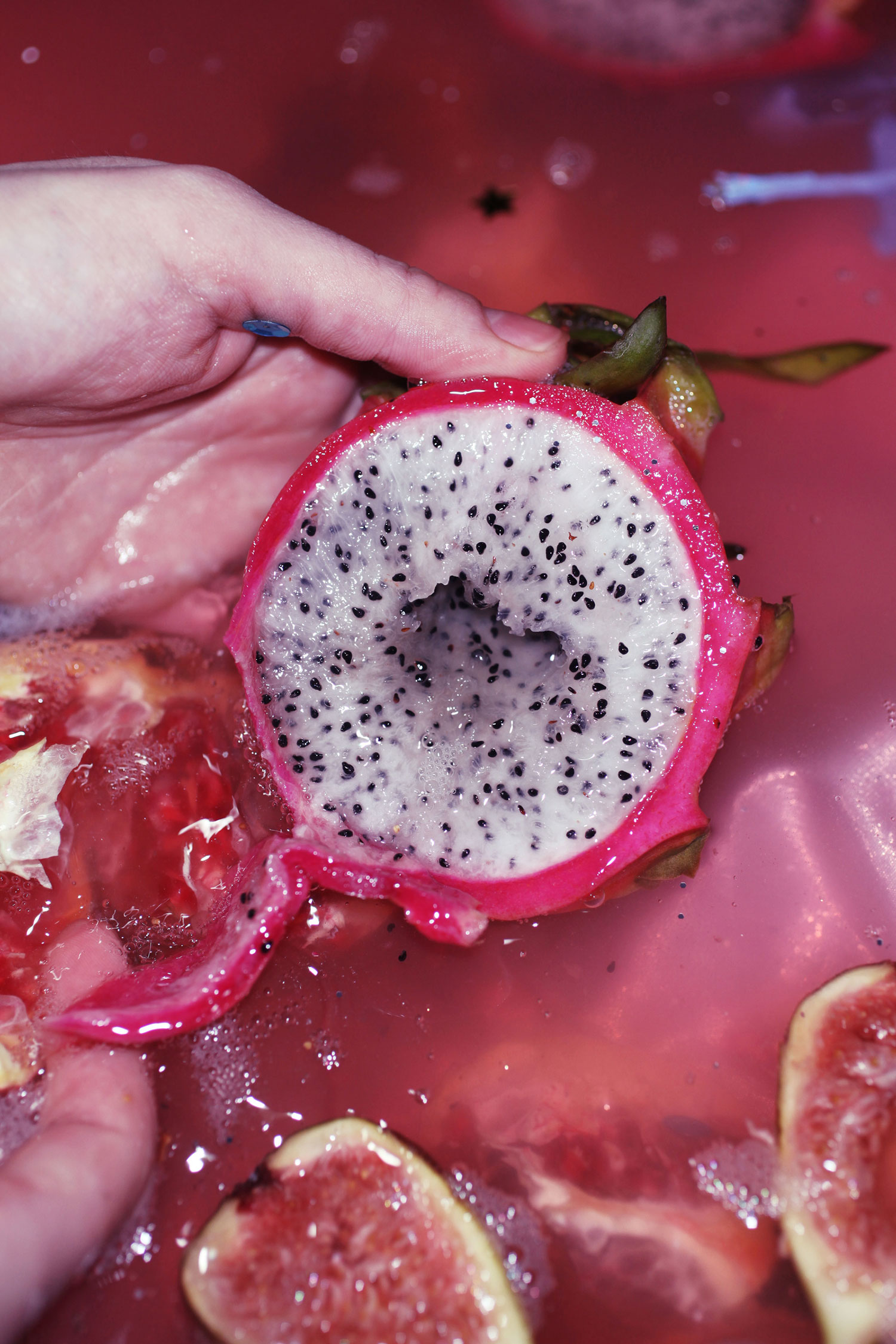The raw power under the hood of Affinity Photo will leave you amazed at how quickly you can work. Watch your edits render in real time and dive into the huge toolset, tailored to the demands of a professional workflow. + Live, real time editing + Massive image support (100+ Megapixels). Affinity Photo ignores the white balance metadata in the RAW file. If you toggle on the white balance option in develop mode you still need to find out the white balance settings (somehow) and type them in yourself. Good cameras do a very good job of automatically setting white balance for scenes.
- In terms of RAW photo editing, Affinity Photo’s big advantage is its ability to process very large files (more than 100 Megapixels) and to offer smooth zoom at 60 frames per second. It gives you full control over the smallest details of your images and provides editing tools such as levels, curves, HSL, and exposure and white balance adjustments.
- As for Affinity Photo, it is used to perform advanced picture retouching of each picture separately. Choose Lightroom if you work with RAW files since it is perfect for cropping the image and correcting colors and shadows. However, if your pictures require image retouching, Affinity is the best variant, actually.
Version 1.7 of Affinity Photo launched back in June, and along with a new host of features it also boasted improvements to existing functionality—one such improvement was related to RAW development, and this can actually be broken down into several key areas.
Demosaicing and Noise Reduction
Affinity Photo’s RAW development has always been regarded as a bit of a mixed bag: common complaints were directed towards handling of image noise, especially with low light imagery, as well as a lack of lens correction options.
Speaking personally, the biggest issue has always been a combination of the demosaicing and subsequent noise reduction—it wasn’t particularly effective with noisier images and would often fail to remove the visible bayer pattern noise. For most well-lit imagery shot at lower ISO values, the quality of the RAW development was more than sufficient—where it fell apart, however, was with more esoteric imagery like astrophotography and long exposure photography.
Up until version 1.7, I would choose not to process my wide field astrophotography RAW files in Affinity Photo—rather, I would use Sony’s own Imaging Edge processing software to pre-process the images to 16-bit TIFF files, which would then be brought into Affinity Photo. I just couldn’t get sufficient results developing the RAWs in our app.
A bit of background: wide field astrophotography typically involves utilising fast ultra wide angle lenses—for example, a 14mm lens (full frame equivalent) at f/2 or f/2.8—and setting a short shutter speed with a high ISO. You generally want to avoid movement with the stars, hence the relatively short exposure time, which could be anywhere from 5 to 20 seconds.
This means you typically have to raise the ISO to around 3200, 6400 or even 12,800 depending on the lighting conditions—even then, you will likely be increasing the exposure during editing, which will further reveal the noise in the image. Good demosaicing and noise reduction is paramount for this type of imagery.
With the release of 1.7, however, I’m happy to report that both the demosaicing method and noise reduction have received improvements! Here’s a quick full screen comparison between the initial result you see on-screen between 1.6 (top) and 1.7 (bottom): Aerosoft corfu.
As an initial result, the differences are perhaps quite subtle. The bottom image (1.7) has less chrominance noise and reduced colour pollution/patterning. The noise profile actually appears slightly sharper, but this is a welcome change—another complaint regarding 1.6’s development was that images could appear ‘blotchy’ and soft after noise reduction. After noise reduction in 1.7, there is noticeably more detail available to work with.
Apart from the improved handling of colour noise, the biggest improvement for me is the reduction in the bayer pattern noise—this is often referred to as a ‘maze’ pattern. Look closely at the noise profile of the top image (1.6) and you’ll notice distinct rectangular shaping. This is far less pronounced in the bottom image (1.7).

Bear in mind these are the initial results when you first open a RAW file: by default, some colour noise reduction is applied, but luminance noise reduction is not. Even if you chose not to use any luminance noise reduction, the noise ‘profile’ you get with 1.7’s RAW development is far more pleasing and usable.
Affinity Photo Raw Export
So far, this has highlighted the improved demosaicing and colour noise reduction. Let’s take a look at the luminance noise reduction:
This is clearly a vast improvement for 1.7—as well as reduced colour contamination, the new luminance noise reduction results in less ‘splotchy’ detail around edges, such as where the stars meet the sky.
Notice that even the dimmer stars have been retained, meaning you can apply aggressive noise reduction without destroying finer detail.
Overall, then, 1.7’s improved demosaicing and noise reduction combine to produce cleaner, more usable imagery. The above examples are of an extreme edge case—in these screenshots, I’m easily zoomed in at 400% or greater with RAW images routinely underexposed at ISO 6400 or higher—so they’re a real stress test for any RAW development capabilities.
However, these improvements will also benefit photographers who shoot other types of images: the improved demosaicing will result in smoother, more pleasing rendering for portraiture and landscape imagery, for example, whilst the noise reduction is great for low light and long exposure imagery. In general, it’s a positive for anyone shooting RAW knowing that Affinity Photo has made great improvements in these areas.
Hot pixel removal/remapping

Another less obvious improvement is the addition of hot pixel removal, also known as hot pixel remapping. Hot pixels can occur in any type of photography, but are most prevalent with long exposure and high ISO imagery. Depending on how badly your camera is affected by hot pixels, it can be a time-consuming and frustrating experience to remove them manually during editing.

To further compound the issue, hot pixels are usually just individual pixels dotted around the image. However, because most cameras use a bayer sensor and capture a greyscale image, demosaicing is performed to produce a full colour image. At this point, the hot pixel can spread to neighbouring pixels and contaminate them, like you can see in the examples here.
In Affinity Photo 1.7, hot pixels are remapped automatically before the demosaicing stage, meaning now that you’ll never see them to begin with.
It’s a less dramatic improvement, but anyone who does lots of long exposure and high ISO photography will definitely appreciate hot pixels being remapped automatically.
Lens correction control
Since version 1.5, Affinity Photo has had lens profile support for distortion, chromatic aberration and vignetting correction, but these corrections were always applied automatically. You could of course dive into the Develop Assistant and disable lens corrections if you wished to, but there was no way to have any control over how the corrections were applied.
1.7 takes steps towards giving the user a little more control in this department. Whilst developing a RAW image in the Develop Persona, the Lens panel will list the lens correction being applied. You can choose whether to correct the distortion using this profile or achieve it manually by unchecking the box next to it and manipulating the correction sliders.
The Chromatic Aberration Reduction and Remove Lens Vignette options will also use values provided by the lens profile—you can however change Use Lens Profile to Estimate from Image, and Affinity Photo will analyse the image and produce its own results for these corrections.
Finally, there are circumstances where the appropriate lens profile may not be found—you may, for example, be using a manual lens that does not communicate with the camera body, and so the lens type is never written to the image’s EXIF data. In this case, there is a filter in the main Photo Persona that can be used to manually find and apply a lens profile correction. It’s located under Filters>Distort>Lens Correction. You can filter the list of lenses by camera mount/type or simply find your lens from the alphabetical list.
This Lens Correction filter gives you access to the full database of lens correction profiles—you’ll find plenty of classic manual focus lenses that have profiles. In the screenshot, you can see that I’ve located a profile for the classic Helios 58mm M42-mount lens when adapted to a Sony full frame camera body. Bear in mind that when shooting with manual lenses, there is also no focal length communicated to the camera body and thus the resulting EXIF data, so you’ll need to change the Focal length setting manually as well—this is only really applicable if the lens in question is a zoom lens, since it may have different correction profiles depending on the focal length.
Some final points
That wraps up our little tour of the improvements to RAW development in Affinity Photo 1.7—it makes the app a much more viable option for people who shoot more technically demanding types of photography, but of course you’ll benefit from the improvements even if you don’t push your camera to its limits!
Affinity Photo Raw For Panasonic Lumix
I do however think it’s important to tailor expectations and reiterate that Affinity Photo is still very much a raster image editor—it is not designed as a DAM (digital asset management) alternative, and as such is not suited for bulk/batch development of RAW images. The RAW development functionality exists so that you can bring in your initial image at the highest quality possible before doing further work on it in the main Photo Persona.
That’s not to say you can’t do basic image edits to your RAW files in the Develop Persona—you absolutely can! If you just want to make a few tweaks to your images and then export them, that is a perfectly viable way of working in Affinity Photo. Where you may struggle is if you need to apply development settings to a large batch of images and export them all quickly and efficiently (wedding and event photographers may rely on this approach, for example). The truth is that Affinity Photo does not sufficiently accommodate this type of workflow—currently, at least.

You can apply recorded macros to batch jobs, but that is more for taking a series of .afphoto document files or existing image files (JPEG/TIFF for example) and applying creative or functional actions to them—this workflow does not appeal for RAW images because you cannot batch-apply development settings.
Affinity Photo Raw Quality
That said, if your workflow does not rely on an efficient batch-development workflow and you are happy to develop and edit images in a singular fashion, I would certainly recommend giving Affinity Photo a look. If you tried a previous version, for example 1.6 or even 1.5, and were put off by the RAW development quality, I would also wager it’s a good time to give the app another go and see if you can’t be tempted now… don’t forget to check out the official video tutorials for a good understanding of what you can achieve using the app.
